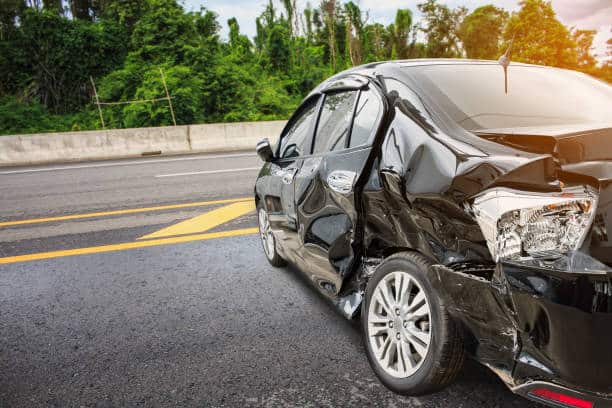Pest control has long been a vital aspect of maintaining health and safety in various environments, from homes and businesses to agricultural settings. Traditionally, pest control relied heavily on manual methods such as traps, pesticides, and physical barriers to mitigate infestations. While these methods have been effective to some extent, they often come with inherent limitations.
Traditional pest control software methods are often reactive rather than proactive, meaning they address infestations after they have already occurred, leading to potential damage and health risks. Additionally, these methods can be time-consuming, labor-intensive, and sometimes environmentally harmful due to the use of chemical pesticides.
However, the advent of technology has ushered in a new era of pest management with the introduction of software solutions. By leveraging the power of digital tools and data analytics, pest control professionals now can monitor, detect, and address pest issues more efficiently and proactively.
Evolution of Pest Control Software
Pest control software emerged as a response to the growing need for more efficient and effective methods of managing pest infestations. The earliest iterations of such software can be traced back to the late 20th century when computer technology began to gain prominence in various industries. As pest control professionals sought ways to streamline their processes and improve outcomes, the concept of using software solutions to aid in pest management gained traction.
Key Milestones in Development
1980s: The emergence of basic pest control databases marked the first steps towards digitizing pest management processes. These databases allowed for the storage and retrieval of information related to pest sightings, treatments, and outcomes.
1990s: The development of more sophisticated pest control software programs equipped with graphical interfaces and advanced reporting capabilities revolutionized the industry. These programs enabled pest control professionals to visualize data more effectively and make informed decisions.
Early 2000s: With the advent of the internet, cloud-based pest control software solutions became increasingly prevalent. This allowed for real-time access to data from anywhere with an internet connection, facilitating collaboration among team members and improving response times.
Mid-2000s to Present: The integration of advanced technologies such as IoT (Internet of Things) devices, remote sensors, and predictive analytics has propelled the evolution of pest control software to new heights. These technologies enable automated monitoring, early detection of pest activity, and predictive modeling to anticipate and prevent infestations before they occur.
 Advancements in Technology
Advancements in Technology
- IoT Integration: The proliferation of IoT devices such as smart traps, sensors, and cameras has enabled real-time monitoring of pest activity. These devices can communicate data directly to pest control software platforms, allowing for prompt intervention when signs of infestation are detected.
- Data Analytics: The use of advanced analytics algorithms has enhanced the ability of pest control software to analyze large volumes of data and identify patterns indicative of pest behavior. This enables more accurate predictions and targeted interventions.
- Mobile Accessibility: Mobile applications have made pest control software more accessible to field technicians, enabling them to record observations, update treatment plans, and communicate with clients while on-site.
- Integration with Other Systems: Pest control software has become increasingly integrated with other business management systems such as CRM (Customer Relationship Management) software and accounting platforms. This integration streamlines operations and improves efficiency by eliminating the need for manual data entry and ensuring consistency across various aspects of the business.
Future Trends and Innovations
As the field of pest control continues to evolve, several emerging technologies are poised to shape the future of pest control software and revolutionize industry practices. Here’s a glimpse into the future trends and innovations that are expected to have a significant impact:
- Integration of Artificial Intelligence (AI) and Machine Learning:
- AI and machine learning algorithms are expected to play a pivotal role in enhancing the capabilities of pest control software. These technologies can analyze vast amounts of data to identify patterns, predict pest behavior, and recommend optimal treatment strategies.
- AI-powered image recognition systems can automate the identification of pests from images captured by surveillance cameras or IoT devices, enabling faster and more accurate detection.
- Machine learning algorithms can continuously learn and adapt based on feedback from pest control professionals, leading to more refined and effective pest management solutions over time.
- Automation and Robotics:
- The use of robotics in pest control is expected to increase, particularly in environments where manual intervention is challenging or hazardous. Autonomous drones and robotic devices equipped with pest detection sensors and dispensers can perform tasks such as aerial surveillance, targeted spraying, and trapping with precision and efficiency.
- Automated pest control systems can operate around the clock, providing continuous monitoring and rapid response to emerging pest threats.
- Climate Change and Environmental Considerations:
- Climate change and shifting environmental conditions are likely to impact pest populations, distribution patterns, and behavior. Pest control software will need to adapt to these changes by incorporating predictive modeling and scenario planning capabilities.
- Software solutions that take into account climate data, temperature fluctuations, and habitat changes can help pest control professionals anticipate and mitigate the effects of climate-related disruptions on pest populations.
- Emphasis on sustainable pest management practices and eco-friendly solutions will drive the development of software tools that prioritize environmentally responsible approaches to pest control.
- Internet of Things (IoT) and Sensor Technology:
- The proliferation of IoT devices and sensor technology will continue to transform pest control operations by providing real-time monitoring and data collection capabilities.
- IoT-enabled traps, sensors, and surveillance cameras can communicate with pest control software platforms, allowing for instant notifications of pest activity and enabling prompt intervention.
- Integration of IoT data with weather forecasts, environmental data, and historical pest trends can enhance predictive modeling and decision-making processes.

Pest control software holds immense transformative potential in revolutionizing the future of the industry. By leveraging advanced technologies such as AI, machine learning, and IoT, software solutions empower pest control professionals to detect, monitor, and manage infestations with unprecedented efficiency and accuracy. This not only improves outcomes for businesses and customers but also reduces environmental impact and promotes sustainability.
However, to fully realize this potential, continued innovation and collaboration are imperative. The landscape of pest management is constantly evolving, with new challenges emerging due to factors such as climate change, urbanization, and globalization. By fostering collaboration between industry stakeholders, researchers, and technology developers, we can address these challenges more effectively and drive innovation forward.
Moreover, businesses must embrace digital solutions to remain competitive and resilient in the face of changing landscapes. As technology continues to advance, digital tools will become essential for optimizing operations, enhancing customer satisfaction, and staying ahead of the competition. By investing in pest control software and embracing digital transformation, businesses can position themselves for success in an increasingly digital world.
Copyright © 2024 California Business Journal. All Rights Reserved.
Related Posts




